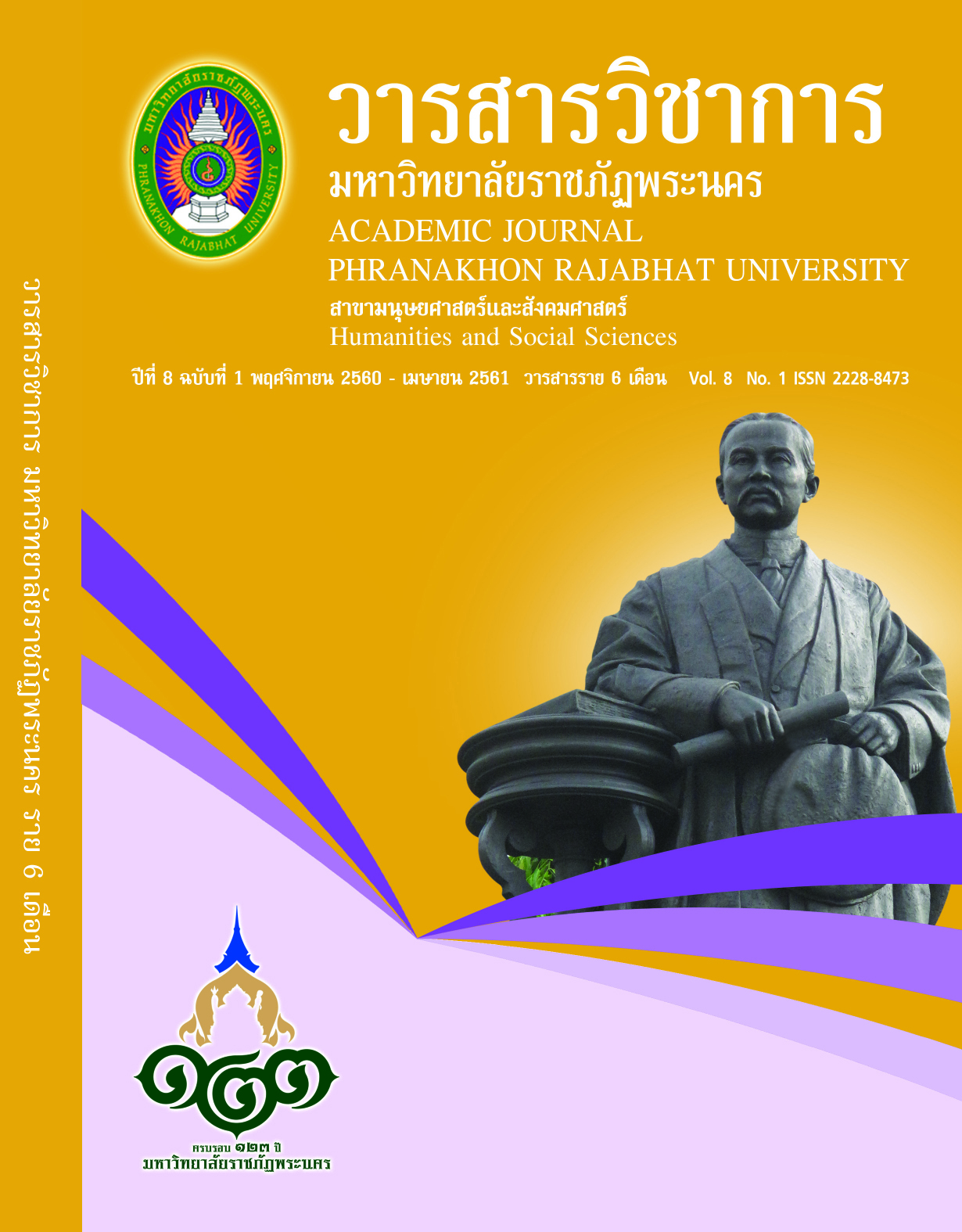ทางเดี่ยวระนาดเอกเพลงพญาโศก 3 ชั้น ทางครูกล้ำ ณ บางช้าง กรณีศึกษา ครูชาตรี อบนวล
Keywords:
Tang Deaw, Ranat - ake, Pleng Phayasoke SamchanAbstract
The purposes of this research were to stuy: 1) To study the biography and works of Khru Chatree Obnaun 2) To Analysis Tang deaw Ranat-ake Pleng Phayasoke Samchan of Khru Khum Na BangChang 3) To study the role of Pleng Deaw Phayasoke in Thai Society and Thai Culture. This research methodology using the qualitative research.
Keylnformants) was14. the research instruments were the data were analyzed by content analysis
This results were as follows: 1) Khru Chatree Obnaul His proud trophy were award winning by solo xylophone music instrument in Pleng Cherdnok song and by solo alto xylophone music instrument in kroundnai song in front of the throne. He recieved a composer’s winning Award. The Phayasoke song emerged since the Ayutthaya period. The original song was a middle rhythym (Songchan), and the rhythym used in first verse were 8 rhythymsof Nathabprobkai. At the reign of King Mongkut, the composer named Luangpraditphairaw (Mee-khaek) adapted its into the slow rhythym (Samchan). After this, it was play by solo with many single musical instruments. 2) The analysis of Phrayasoke Samchan song shown that; its had fall down in Do –Scale 1 time, fall down in Re–Scale 6 time, fall down in Fa–Scale 3 time, fall down in Sal–Scale 1 time, fall down in La–Scale 3 time and fall down in Te–Scale 2 time The analysis Key-Scale used in Plang Deaw Phrayasoke Samchan song shown that; its had 3 Key-Scale included; Thanghab, Thangklangnok and Thangnai. 3) The identity of Tang Deaw Phrayasoke Samchan of Krue Klam Na Bang Chang song was the procession of playing Ranat-ake in the style of Sabud, Lukchangwa, khayee, Kwad, Rua and Samnuanklon (music verse in Thai classical music). The musicians must be a good skill to play this song. The role of Plang Deaw Phrayasoke song in Thai society and Thai Classical Music culture including; The using in Thai classical performance musics and dances. The using in education.
References
ไชยยะ ทางมีศรี. (2558). ข้าราชการบำนาญ ตำแหน่งผู้เชี่ยวชาญด้านดนตรีไทย สำนักการสังคีต กรมศิลปากร. สัมภาษณ์, 25 พฤษภาคม 2558.
ณรงค์ชัย ปิฎกรัชต์. (2557). สารานุกรมดนตรีไทย. นครปฐม : สำนักพิมพ์ มหาวิทยาลัยมหิดล.
นัฐพงศ์ โสวัตร. (2557). ข้าราชการบำนาญ ตำแหน่งผู้เชี่ยวชาญด้านดุริยางค์ไทย สถาบันบัณฑิตพัฒนศิลป์. สัมภาษณ์, 19 มีนาคม 2557.
พิเชฐ สีตะพงศ์. (2539) เอกสารรายงานการวิเคราะห์ดนตรีไทย. โดยนักศึกษาปริญญาโท วัฒนธรรมการดนตรี มหาวิทยาลัยมหิดล.
เพชรดา เทียมพยุหา. (2523) วิเคราะห์ทางเดี่ยวระนาดเอกเพลงพญาโศกสามชั้น ทางครูจางวางทั่ว พาทยโกศล. ปริญญาศิลปกรรมศาสตรบัณฑิต สาขาวิชาดุริยางคศิลป์ คณะศิลปกรรมศาสตร์ จุฬาลงกรณ์มหาวิทยาลัย.
มานพ วิสุทธิแพทย์. (2556) ทฤษฏีการวิเคราะห์เพลงไทย. กรุงเทพฯ : โรงพิมพ์ชวนพิมพ์.
สำเนียง มณีกาญจน์ และสมบัติ จำปาเงิน. (2539) ประชุมเพลงเถาของไทย (ประวัติและบทร้อง). กรุงเทพฯ : โรงพิมพ์ต้นอ้อ.
สหวัฒน์ ปลื้มปรีชา. (2558). ผู้ช่วยศาสตราจารย์ คณะศิลปศึกษา สถาบันบัณฑิตพัฒนศิลป์. สัมภาษณ์, 14 สิงหาคม 2558
Downloads
Published
How to Cite
Issue
Section
License
"บทความวิชาการในวารสารฉบับนี้ ถือเป็นความรับผิดชอบของผู้เขียนเท่านั้น"
สงวนลิขสิทธิ์ตามพระราชบัญญัติลิขสิทธิ์




